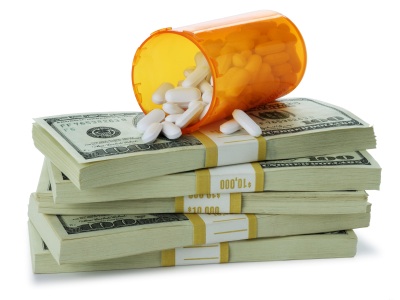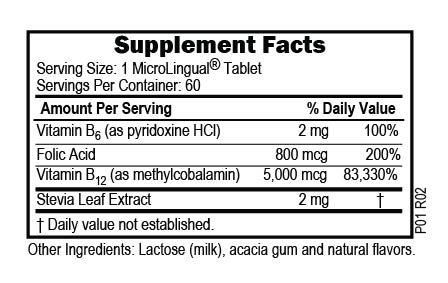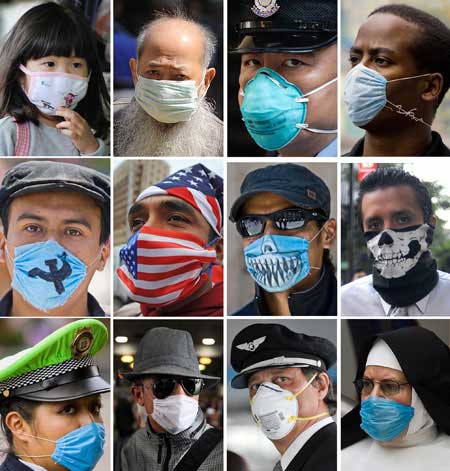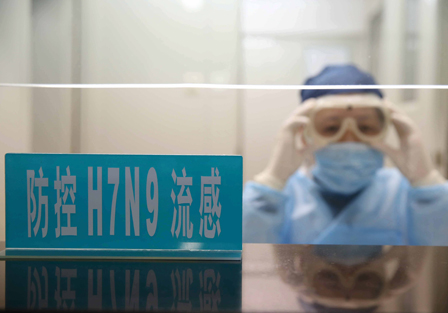Medications: When Newest Isn’t The Best
Its all very well for big pharmaceutical companies (pharmas) to release a new medication with a big bang , what with the enormous money invested in its research, development and production . However, not often enough, such new launches become unstuck when unexpected side-effects appear after a few months on the market, despite the most strenuous prelaunch testing and extensive marketing as a blockbuster-to-be.
Unexpected side-effects aside, what’s potentially more serious is when clinical trials (designed to prove a drug’s efficacy before its official launch) are falsified, thereby giving end-users erroneous data proclaiming (falsely) the drug’s efficacy. Such appears to be the case with regards to the Kyoto Heart Study.
What was the significance of this study? This study by Japanese scientists was greeted with great fanfare in 2009 and centres around the ability of a medication ,already extensively used for the treatment of high blood pressure, to reduce the possibility of getting stroke by 50% when used in high-risk patients. This was a milestone in drug treatment for hypertension and enabled the maker, Novartis , to make it one of the best-selling drugs in the world.
The drug itself, valsartan, which is marketed as Diovan has been on the market since around 2001 for the treatment of hypertension and belongs to the new group of ARBs (angiotensin-receptor blockers). In fact, its patent expired in 2012, thereby enabling any pharma to produce its own version, so-called generic drug.
And now the bombshell: Last Friday, Japan’s minister of health, Norihisa Tamura, as well as university officials at Kyoto Prefectural University announced that the Kyoto Heart Study data were “very likely” fabricated, Apparently, incomplete data was used and some of the scientific investigators were in fact employees of Novartis.
The reaction to this has been deafening. the respected European Heart Journal retracted the study from its 2009 issue. There has been widespread condemnation among medical circles, resulting in the resignation of the principal Japanese investigator from the Kyoto University, Dr Matsubara.
This episode puts into perspective the over-reliance of the efficacy of new medications on so-called landmark scientific studies, whose integrity may be subject to the temptations of big bucks and commercialism. Often, the losers are the consumers themselves.
Related articles
The World’s Best Hospitals – How To Be One
Lots of hospitals claim to have world-class facilities and boast of being the region’s best, but what really does it take to be one? The mere presence of a five-star hotel lobby with expensive chandeliers and smiling receptionists definitely is not one criteria. Lest we forget, people come to a hospital with a problem they want fixed; the rest are just superfluous and complementary.
The best medical centers for the most difficult patients – that’s how the US News & World Report decides which are the best hospitals in the US, for example. They have been publishing annual rankings of the best hospitals in the US since 1991. The latest list was released last week:
US News & World Report Top Hospitals Honor Roll 2013
|
1. Johns Hopkins Hospital, Baltimore, Maryland |
|
2. Massachusetts General Hospital, Boston |
|
3. Mayo Clinic, Rochester, Minnesota |
|
4. Cleveland Clinic, Ohio |
|
5. Ronald Reagan University of California–Los Angeles Medical Center |
|
6. Northwestern Memorial Hospital, Chicago, Illinois |
|
7. New York–Presbyterian University Hospital of Columbia and Cornell, New York City |
|
8. University of California–San Francisco Medical Center |
|
9. Brigham and Women’s Hospital, Boston |
|
10. UMPC-University of Pittsburgh Medical Center, Pennsylvania |

Johns Hopkins Hospital,Baltimore,Maryland – rated top in the US despite its ordinary facade.
Its interesting to note from the above list that Johns Hopkins was displaced from its top spot only once – last year in 2012 – when it went to the current runner-up. All the top five have consistently retained their top five status.
The magazine awards points to hospitals based on the individual specialty rankings. In 12 of the 16 specialties, measurable performance in terms of quality of care, safety, and mortality accounts for two thirds of a hospital’s score. The institution’s reputation among specialists, ascertained by a survey, accounts for the remaining one third.
You can read more, including the best hospitals for each specialty here.
So what does it take to be a world-class hospital? Apart from good outcomes, the following are also important:
1. Innovation – A desire to practice in an environment that embraces evidence attracts nurses and other staff to these hospitals.
2. ‘Patient-first’ philosophy – a no-brainer really, but quite easily forgotten by hospitals who pay too much attention to the financial bottom-line. They often forget that its the patients (read ‘customers’) who are paying their salaries!
3. Collaboration – Teamwork creates better outcomes, and many of these hospitals have embraced fostering greater collaboration between disciplines. Every discipline brings a special domain of practice, knowledge and skill to create a village of information.
4. Quality Improvement- Structured processes for clinical services allow staff to define and sustain clinical practice standards and incorporate new findings into practice. Care processes and measures for success can be defined and measured via a balanced scorecard.
5. Quality Nursing Care – Patients come to the hospital expecting the best doctor and often, they will get one for their medical condition to be treated appropriately. What can make the difference is the nursing. When nurses add on compasssion on top of the usual nursing skills, they give that extra edge to that hospital’s reputation.
6. Positive Work Environment – Nurses form a key component in any hospital, and to retain and attract them, the hospital management has to create an environment where people will want to work in. In my experience, a good pay is important but this is not the be all and end all. Other factors come into play like professional satisfaction and empowerment.
7. Continuing Education – one of the factors enhancing point 6. We are looking not at just professional education, but also at social skills like complaints management.
8. Staff Engagement – When you engage people closest to the work , you respect them.They want to know where the organization is going and what the driving value is, and you can demonstrate how their work contributes to that. That includes letting the staff know as and when new staff are brought in as part of succession planning.
In my years as a hospital manager, the above values keep on recurring time after time and quite often, many hospitals do not make it to the top quite simply because the above lessons are not assimilated. Let me reiterate, good clinical outcomes are a must.
Vitamin Makers Won’t Want You to Know This
What with more than 54,000 dietary supplements on the market, sold under 1,000 different brands, vitamin pills and dietary supplements are big business nowadays. But there are some things that consumers need to know..
The Food and Drug Administration (FDA) defines a supplement broadly, as an ingestible product containing a “dietary ingredient,” which may include vitamins, minerals, herbs or other botanicals, amino acids, and substances such as enzymes, organ tissues, glandulars and metabolites.That practically means anything from plain old Vitamin C to exotic stuff like L-carnitine.
Faced with so many choices, consumers are hard-pressed to know what are safe products. In some countries like Malaysia, the Drug Control Authority issues licences to those that have met safety standards, including supplements. However, as in the US, the FDA does not need to sanction any of dietary supplements known before 1994. Manufacturers producing supplements after that date need only notify the FDA and produce documents showing the ingredient is “reasonably expected to be safe” — according to the manufacturer’s own assessment.So supplement makers need not undergo the stringent tests expected of prescription drugs.
More does not mean better – Often, people think that if they take more than the recommended dose, they’ll reap even more benefits. This isn’t necessarily so, especially in the case of fat-soluble vitamins like Vits A,D and E. Taking more than the daily recommended dosages can lead to serious side-effects. Vitamin A poisoning can cause liver failure and permanent brain damage, for instance, and I have seen this in my personal practice.
‘Natural ingredient’ does not mean ‘safe’- I can name a lot of natural ingredients used in supplements that are by no means safe. Case in point – arsenic, mercury. A popular Chinese herb, Ephedra (ma huang) marketed for weight-loss and athletic performance, has in fact caused high blood pressure and death in users.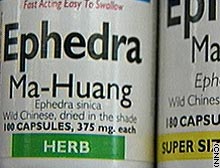
What you see is not what you get– just because the label says 2 grams of extract does not mean you’re getting just that. The words ‘blend’ and ‘formula’ are used in marketing products which may not contain exactly the claimed amount. This is especially true in expensive ingredients like chondroitin. When reading labels, focus on the ingredient you want, and make sure it’s listed alone as an ingredient , not followed by the word “blend” or “formula.”
Health benefits may be debatable- because supplements do not have to undergo the rigours of a scientific study, some claims cannot be proven and are subject to anecdotal and ‘word of mouth’ evidence. Products that “curbs appetite to help with weight loss” may be no more than unsafe ‘amphetamine-type’ appetite suppressants with high-fibre additives.
Pills are not a substitute for a balanced diet.- In fact, with a balanced diet, supplements are often unnecessary, except if one is recovering from an illness or have special needs. All the supplements one takes is not going to supply the calories and proteins the body needs for its daily tasks.
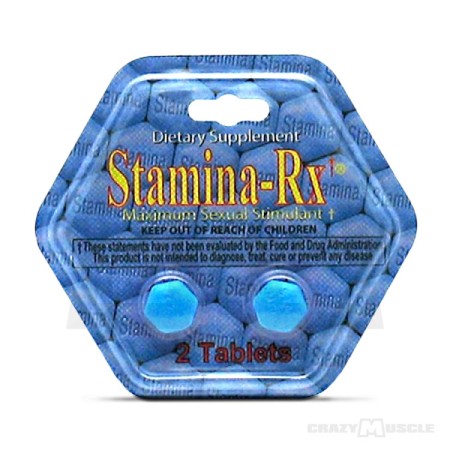
So-called herbal formulas actually may contain prescription drugs, like this one which has a Viagra-like substance added.
Some ‘effective’ supplements may contain prescription drugs- supplement makers have been known to add in proven drugs to make their products effective. A classic example are supplements to enhance male sexual performance that have been found to contain sildenafil citrate, an active component of Viagra. See my posting on “Viagra Coffee – Keeps You Up All Night”. Tip: don’t buy from an Internet company you’ve never heard of, or one that only has a P.O. box.
Let your Doctor know- ..what you’re taking, especially when you are scheduled for surgery. Quite a few of supplements like Evening Primrose Oil (EPO) and Gingko interfere with the clotting mechanisms of the blood in conjunction with surgery and can cause excessive bleeding. Its surprising how very few makers insert this warning message on their labels. I have written in an earlier posting here on the list of supplements which can interfere with surgery.
Related articles
- The Truth about Supplements (video.foxnews.com)
If You Must Mask, Mask Correctly
Face-masks come in many shapes and sizes. One normally associates them with surgical masks, which is meant to prevent germs from the wearer contaminating the environment. However, the haze which is affecting Southeast Asia is another story..
The Southeast Asian haze event is caused by continued uncontrolled burning from “slash and burn” cultivation in Indonesia, and affects several countries in the Southeast Asian region because the prevailing southwesterly winds carry the pollutants across the water – see below.
What are haze particles composed of? Haze particles are predominantly made up of fine particles that are 2.5 micrometers or smaller. This means using an ordinary facemask, whether single-ply, 2 ply or 3 ply, hardly protects the wearer effectively from the haze particles Its designed to keep the germs in and should be worn by those having viral illnesses like flu. Nevertheless, ordinary surgical masks will reduce the inhalation of haze particles but NOT eliminate them completely.
To eliminate haze particles completely, one needs to wear a N95 mask (so-called because these masks eliminate 95% of particles as small as 0.1 micrometers (or microns). It must be tight-fitting and is rather uncomfortable to wear over long periods as extra effort is sometimes needed to inhale.
For this reason, the N95 mask is a must for those with lung problems, those with reduced immunity and those who have to be in the open for prolonged periods (like traffic cops).
For those who are otherwise healthy and stay indoors most of the time, ordinary surgical masks may be adequate. In all cases, adequate hydration is important mainly to facilitate the removal of the haze particles which have lodged in the lungs.
Related articles
- Singapore’s Great Haze exposes limits of e-commerce (sgentrepreneurs.com)
It’s a Mad, Mad World – 15 New Mental Illnesses
If the latest manual in psychiatry is anything to shout about, ladies and gentlemen, we have quite a number of new mental illnesses to worry about. And maybe throw out a couple of outdated ones out of the window..
The Diagnostic and Statistical Manual of Mental Disorders, or DSM for short, lists these changes. The American Psychiatric Association released its revised fifth edition of the manual recently, which serves as the official authority on mental health diagnoses (and related insurance claims).
Among the new entries are:
Compulsive Hoarding– a pattern of behavior that is characterized by the excessive acquisition of and inability or unwillingness to discard large quantities of objects that cover the living areas of the home. Read more here.
So, Is Coffee OK, Doc?
Some patients asked recently whether coffee was good for one’s health. They had apparently noticed that there has been the shift in marketing strategy by coffee-makers in promoting it as a rich source of anti-oxidants, and therefore beneficial to health.

YES, coffee is a rich source of anti-oxidants, like chlorogenic acid and melanoidins, the latter being the most important component of roasted coffee. Some of the other beneficial effect of drinking coffee include:
- Reducing the incidence of Parkinson’s Disease and Alzheimer’s. Read “A Cup of Coffee a Day will Keep Alzheimer’s Away”.
- Protecting against diabetes. Moderate consumption may lower the risk of type 2 diabetes in younger and middle aged women.
- Preventing liver disease and the formation of liver and kidney stones.
- The beneficial effects of caffeine in coffee on alertness, attentiveness, and wakefulness.
NO, among other things:
- Unfiltered coffee (as in Turkish coffee and kahawa) raises blood cholesterol. Filtered coffee, as in instant coffee, does not do so as diterpenes, responsible for raising cholesterol, are removed by filtration.
- Coffee consumption is also associated with an increase of plasma homocysteine, a risk factor for coronary heart disease.
- Caffeine in coffee can increase the risk of elevated blood pressure and hardening of the arteries, as well as palpitations.
- 4 cups or more will hasten osteoporosis, especially in those with low calcium intake in the diet.
- Coffee increases heartburn, aka gastro-eosophageal reflux disease (GERD).
What about heart disease? The verdict’s not in just yet..on one hand, diterpenes cause a rise in cholesterol and homocysteine but this seems balanced by the beneficial anti-oxidant properties. As of now, there is no convincing evidence that coffee leads to heart disease, period.
I ought to clarify here that we are talking about coffee, just plain coffee. The pendulum swings the other way when we consume coffee with additives, like milk and sugar. The latte at the local Starbucks will add on quite a substantial amount of fats, sugars and calories (260 to be precise, see here). Compare that to the ZERO calories of plain black coffee!
Related articles
- Well: This Is Your Brain on Coffee (well.blogs.nytimes.com)
- The Pros and Cons of Coffee (restaurantequipmenttogo.com)
This Slimming Pill Kills
The death of a medical student who took a banned slimming pill, dinitrophenol, commonly called DNP, raises the point that most, if not all, slimming pills that are currently available, are a major hazard to health. In fact, to date, the US FDA has only approved two new weight-loss pills (in 2012) after the previous approval of Xenical in 1999. Such are the difficulties faced by pharmas in securing approval for a safe and efficient medicine to lose weight.
23 year old Sarah Houston, a medical student at Leeds University,England, died after taking DNP in an attempt to lose weight in September last year. DNP had already been linked to 62 deaths around the world in a study published last year in The Journal of Medical Toxicity.
DNP is illegal for human consumption but is still available commercially to make make dyes,other organic chemicals, wood preservatives and herbicides. It was originally used as a diet pill in the 1930s but the presence of severe side-effects such as an undue rise in body temperature (hyperthermia) which can be fatal has resulted in its ban since.
A shocking fact which emerged following this tragedy is that DNP is still being sold online as a diet pill. In Sarah’s case. she had bought them via the internet from a trader in Spain. My advice: scrutinise the ingredients of any nonprescription diet pill carefully and avoid disreputable sources.
Related articles
This Is What 2000 Calories Look Like..
2000 calories..that’s what an average-sized man requires in one day. I found this interesting video and it helps explain why there is so much obesity around.
Bird Flu in China – Is There Nondisclosure?
The effects of the current outbreak of the H7N9 avian influenza in China has been as varied as causing the sales of KFC to drop and causing the stock-prices of rubber-glove manufacturers to be on the uptrend..but there’s no mistaking the fact that to date, there has been 9 deaths and 28 confirmed cases (see here).
But a mystery is brewing..the first known human case was in eastern China on Feb. 19, but this was not announced to the public until March 31, some 6 weeks later. This delay in announcement is even being questioned by the heavily censored news media, such as the Communist Youth Daily, the official newspaper of the Communist Youth League.
Was there deliberate concealment by the health authorities? The answer may not be that straightforward. Possible reasons for the delay may include that the new virus strain shows unusual properties and that Chinese laboratories might have been doing tests to detect the previous H5N1 strain instead. To recap, the H5N1 outbreak struck in 2003 where a total of 247 people died. Measures instituted at that time included the controversial administration of several million vaccines to the chicken population at a significant economic cost. This could also be a reason why the news has been suppressed.

Sales of KFC have dropped in China since the outbreak, although there is no evidence that the virus can be spread via properly cooked food.
Avian influenza (also called avian flu, bird flu) is a flu virus that infects poultry but can be transmitted to man by direct or indirect exposure to infected live or dead poultry or contaminated environments. It is generally classified of low virulence (it does not spread to man easily). There is no evidence that the disease can be spread to people through properly cooked food. You can get more info from the WHO Fact Sheet here.
Related articles
- China finds bird flu in five new sites-OIE (healthnexercise.com)
- KFC parent Yum says China sales hit by bird flu (cbsnews.com)
